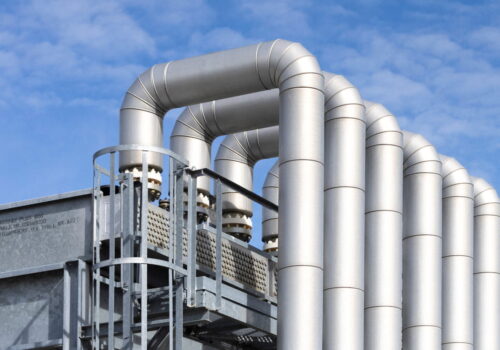Building electricity bridges: The critical role of high-voltage direct current lines
Executive summary
High-voltage direct current (HVDC) electricity lines serve as electricity bridges, connecting previously untapped energy resources to distant demand centers. They also enable optionality for grid operators and, with more than forty-four international interconnections, connect grids across countries.1Jingxuan (Joanne) Hu, “DC and Power Electronics—Key Enablers of Flexible, Reliable, and Economic Future Networks,” CIGRE, March 12, 2021, https://www.cigre.org/article/ GB/dc-and-power-electronics—key-enablers-of-flexible-reliable-and-economic-future-networks. Consequently, HVDC lines are critical tools for improving energy security and lowering energy costs.
The scale and quantity of HVDC projects are growing rapidly. Indeed, HVDC lines are critical for meeting rising electricity demands across developed countries, emerging markets, and the developing world, as the growth in renewable energy generators increases the need to deliver electricity over long distances. The best renewable assets are often located far from demand, whereas most traditional power plants—such as coal, natural gas, and nuclear plants—have been built in relative proximity to load centers such as cities. Compared to high-voltage alternating current (HVAC) lines that connect traditional power plants to relatively close load centers, HVDC lines offer long-distance advantages such as lower energy loss and adaptable power flow. Without HVDC lines, the developed and developing worlds might not be able to provide the additional electricity generation needed for cooling, data centers, artificial intelligence, and other uses.
While HVDC lines present an exciting opportunity to advance several objectives simultaneously, obstacles loom as projects grow to unprecedented scope. Industry leaders and policymakers should grasp the scale of the HVDC opportunity and work in concert to remove unnecessary barriers to development; identify and mitigate potential supply chain shortages; ease trade and investment hurdles; strengthen certainty and predictability for investors; and foster international dialogues to establish the trust needed to conduct these projects.
View the full report
About the authors
Related content
Explore the programs

The Atlantic Council Turkey Program aims to promote and strengthen transatlantic engagement with the region by providing a high-level forum and pursuing programming to address the most important issues on energy, economics, security, and defense.

The Global Energy Center develops and promotes pragmatic and nonpartisan policy solutions designed to advance global energy security, enhance economic opportunity, and accelerate pathways to net-zero emissions.
Image: 3d rendering of a submarine cable being installed from Shutterstock.




